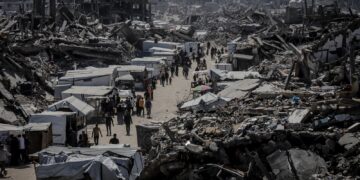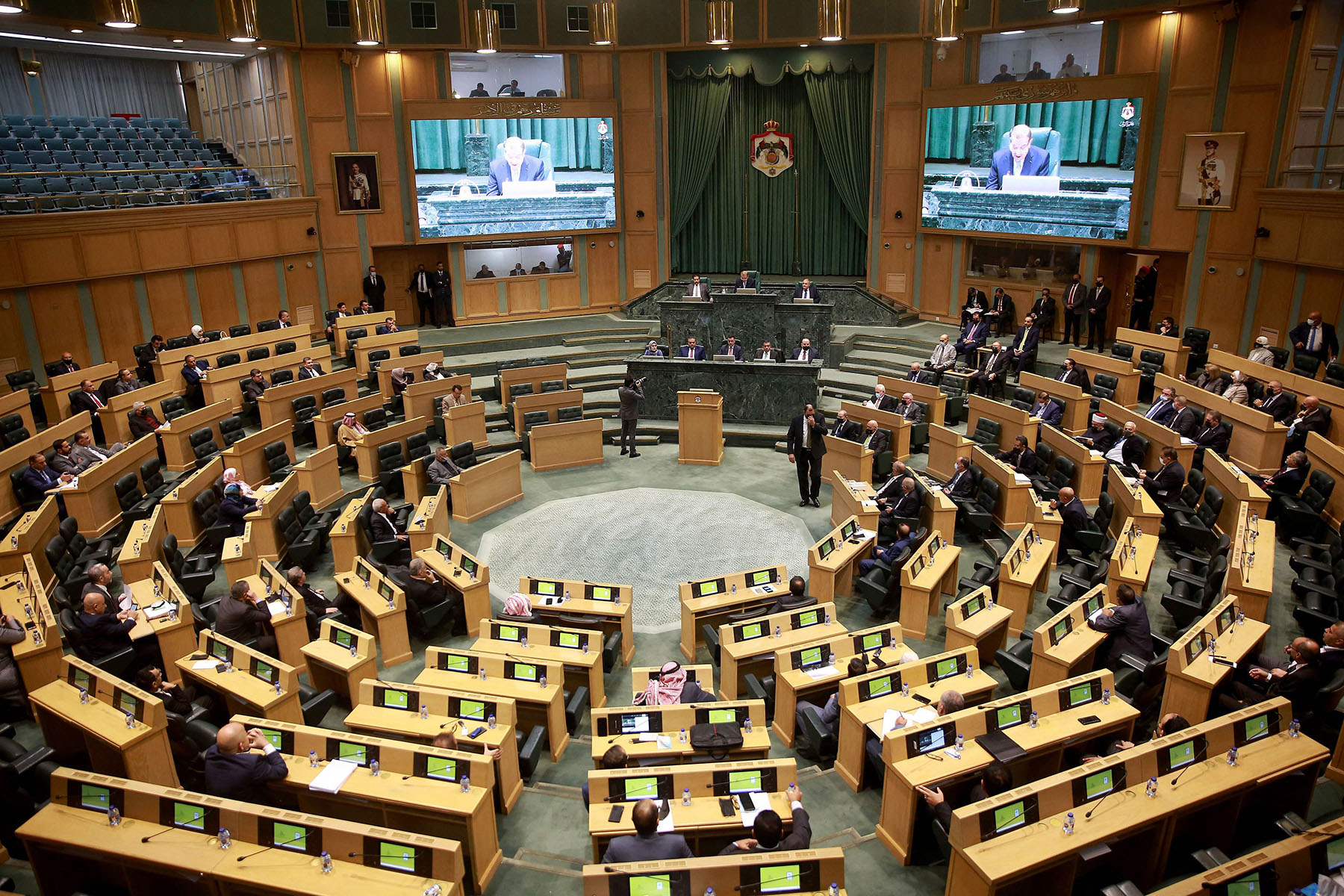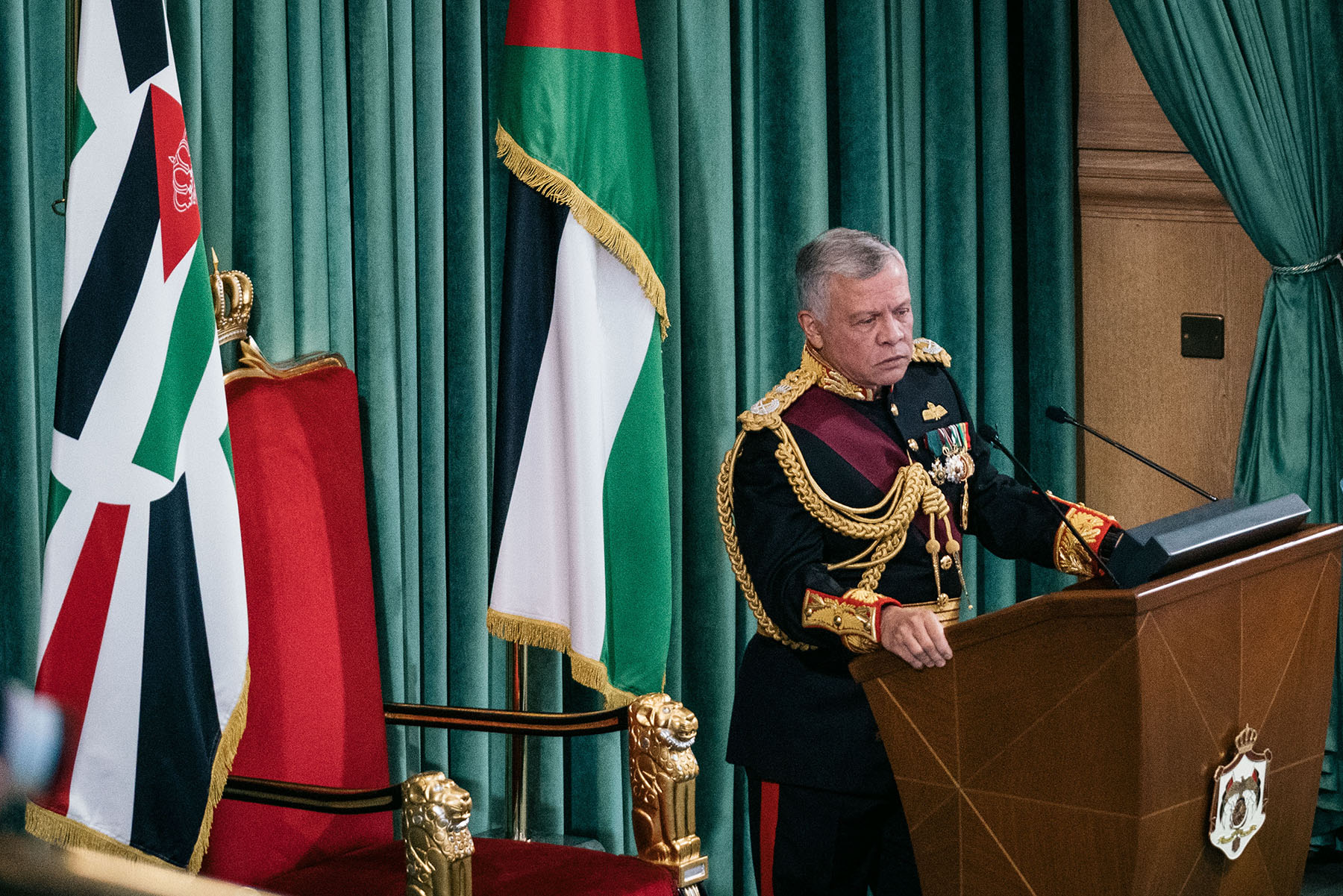Michael Omer-Man is the Director of Research for Israel-Palestine at DAWN.
For spectators of Israeli politics, particularly those following from afar, one of the most shocking aspects of the new Israeli government was the inclusion of Itamar Ben Gvir, a lifelong disciple and now political successor of the radical American-Israeli rabbi and militant Meir Kahane, as a senior minister. In the Israeli political ecosystem of yesteryear, that would have been a red line not even Benjamin Netanyahu would have crossed.
Kahane, who founded more than one group that the United States considered terrorist organizations and who was eventually barred from public office in Israel in the 1980s, never came close to the type of power Ben Gvir has acquired, partly because the latter has moderated his rhetoric. But Ben Gvir's shift in tone does not represent any changes in ideology or political vision, says Natasha Roth-Rowland, an editor at +972 Magazine in Israel and a doctoral candidate in history at the University of Virginia, where her research focuses on the Jewish far right in Israel-Palestine and the United States. (Full disclosure, I was the editor-in-chief of +972 Magazine until 2019.)
"That's one of the reasons Ben Gvir has had so much more parliamentary success than Kahane," Roth-Rowland said in an extensive interview on the history, ideological vision and recent rise of Kahanism in Israeli politics. "He's been a lot savvier about how he presents himself."
Precisely because of that savviness, which has led Ben Gvir and his Jewish Power party (Otzmah Yehudit in Hebrew) to unprecedented political heights, it is important to understand the ideology that drives him. Together with Religious Zionism, a kindred political party with which Jewish Power ran on a joint slate in the last Israeli elections, the far-right party received over half a million votes, making it the third-largest in Israel's parliament, the Knesset.
Their sudden rise to power is particularly destabilizing for many progressive or liberal Zionists in Israel and the United States, who may have trouble reconciling the ideas of Ben Gvir's Jewish Power with the vision of most mainstream Zionist parties, particularly when boiled down to its creed of "maximum land with minimum Arabs." Netanyahu, though, certainly did not have to make any ideological compromises to include Jewish Power in his latest coalition.
So where do the differences lie? Why do Ben Gvir and Jewish Power, with its otherwise unexceptional expansionist and expulsionist vision of Zionism, feel more dangerous and unprecedented in Israel?
"The answer is the level of explicit state, interpersonal and rhetorical violence they're prepared to deploy to get there," explains Roth-Rowland. "There is a level of shamelessness and pride in holding these views and in having this vision that you find on the Kahanist right that you don't see so much on the center-right, and certainly not on the center-left."
The following interview has been lightly edited for length and clarity.
"It's no longer seen as problematic to have Ben Gvir on your nightly news program. It's not seen as problematic to run with him in an election. It is not seen as problematic to put a Kahanist in charge of Israel's police forces, even though he has explicitly participated in so many violent incidents against Palestinians himself."
- Natasha Roth-Rowland
What's the vision of Ben Gvir and his Kahanist ideology? Meaning, if he and his disciples, or he and his party, continue their ascent of power, in this government or in the next one, what would they do?
There is a very foundational desire to have as few non-Jews in the country as possible, and especially as few Muslims in the country as possible. This is by no means exclusive to Jewish Power and to Ben Gvir and the Kahanists, but annexation is a very big piece of the puzzle because of their expansionist mindset—as many ways to expel as many Palestinians as possible.
They are seeking even greater powers to crack down on the judiciary. Again, that's not exclusive to Jewish Power, but it's a very fundamental part of their belief that lends itself to all the other parts of this vision in terms of allowing them to achieve it more expeditiously.
They also want even greater segregation between the [Jewish and non-Jewish] populations than what already exists, greater crackdowns on freedom of the press, freedom of assembly, freedom of speech.
They want greater religious rule. That is more associated with the ultra-Orthodox religious parties, but it was just as much a part of [Meir] Kahane's vision as theirs, which is to have Torah and Talmud be the rule of the land. Rolling back things that would make it easier for people to be out and about on Shabbat, and even floating the idea of restricting electricity generation on Shabbat.
What is Kahanism? A political movement? An ideology? A cult following?
It's all of those things.
When you hear people use that term now—and obviously you do, you see it used more and more—it's basically being used to refer to an ideology, but one that has a very specific movement attached to it. It comes from the name of this ultranationalist, far-right rabbi, Meir Kahane, who was born in New York in the 1930s, and joined some pretty storied right-wing Zionist youth movements that have produced some of the most famous Israeli politicians in history.
In the 1960s, Kahane founded the Jewish Defense League, which was a mixture of an ethnic protest group with a terrorist organization with a street gang. While he was in charge of the JDL, he started to articulate this very muscular, violent, apocalyptic strain of Jewish nationalist ideology that was, and this is very reductive, but you could put a "kill or be killed" label on it.
That was his approach to the group's activism around the Soviet Jewry issue, campaigning for the release of Soviet Jews. It was what drove a lot of the violence that the JDL perpetrated, not only against Soviet targets, but also against Black and brown New Yorkers, because for him "black antisemitism" was one of the sources of elimination that he saw lingering over the Jewish community in the States.
In time that also came to be directed against people he saw as leading the Jews into a destructive form of assimilation, where they lose their traditions, they lose their separateness, they intermarry, and so on. In that, Kahane was not alone. He was feeding into much wider currents and conversations that were happening in the American Jewish community in the 1960s and 70s, which is very uncomfortable reading for people now in terms of just how gendered and inward-looking they were.
But that's where he was situated politically and ideologically when he moved to Israel in the early 1970s and launched a political party, Kach, which was at first like an international outpost of the Jewish Defense League, and then actually became a political party.
He ran for the Knesset a bunch of times with Kach and failed every time until finally in 1984, he was elected; his party got one seat. His ideology when he was in Israel-Palestine built on what he'd articulated earlier in terms of this "kill or be killed" mentality, but now it was much more about a form of nationalism than trying to dictate what a Jewish community should look like as a minority in the diaspora.
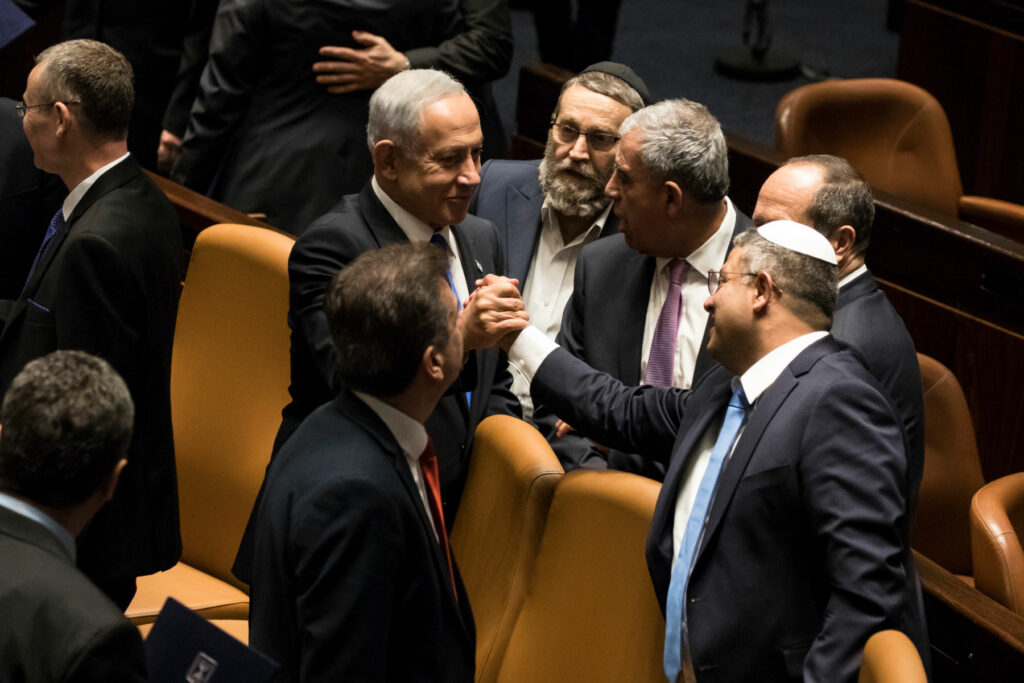
How can we understand Kahanism in relation to other contemporary political movements around the world?
There's a way in which it's just a very clear model of a far-right, ethnic supremacist, ultranationalist movement, but with very strong religious currents running through it.
When you're looking at that religious component, the easiest comparison to make is with the Hindu far right in India. You see a very similar overlap in terms of the Islamophobia that drives a lot of it, the fears and phobias surrounding loss of land, surrounding mixed relationships, the idea that the borders of the country are transgressed through mixed relationships as much as they are transgressed through loss of territory. There's also the very frightening and at times out-of-control violence that you see in the street. When you start looking at the capture of the state by those forces, that is unequivocally what happened in India with the BJP [the Bharatiya Janata Party]. There are obviously major differences, but I think there are constructive comparisons to be drawn.
People in the U.S. might have more familiarity with what it looks like when the Proud Boys descend on their city. That's the kind of dynamic that you're looking at—very aggressive, male-driven, supremacist, street-level violence.
In the past few weeks, as this new Israeli government was being formed, some argued that Ben Gvir is just saying the quiet part out loud. In my reading, Jewish Power and Ben Gvir are not that different to many of the right-wing platforms and policies from right-wing parties over the years—from Avigdor Liberman's population transfer platform to Miri Regev's racial incitement against African refugees to the beatification of Rehavam "Ghandi" Ze'evi, who advocated very similar ideas to….
Yeah, [Ze'evi's] party's whole platform was "quiet population transfer."
So why is Ben Gvir and his Kahanist ideology different? Or how does it differ?
We can talk about how it differs, but I think part of this picture is also why it reads differently to people. I think that is because of some of the moments of terrorism in which Kach has been implicated historically. The most salient of those is the 1994 massacre in the Ibrahimi Mosque / Cave of the Patriarchs in Hebron, which was perpetrated by a Kach activist, Baruch Goldstein—whose wedding was officiated by Kahane, by the way.
Goldstein murdered 29 Palestinians who were at prayer, and he'd been Kahane's campaign manager for the elections in the 1980s. He'd been on a Kach list [of candidates]. He was a Kach city councilor in the settlement of Kiryat Arba, where he lived at the time of the massacre, and which was very much a Kahanist stronghold.
In a country that has a very long history of Jewish terrorism, that one was especially egregious and has remained so in the popular imagination.
And Ben Gvir had a photograph of [Goldstein] on his living room wall for a very long time. There are interviews that you can find on YouTube where people have gone to his house and said, "Why don't you take this down? You have to take this down." And each time, Ben Gvir refused. He would say, "This man Goldstein was a hero. He devoted his life to the Jewish people." Ben Gvir eventually took that portrait down in 2020 under significant duress by potential election partners who told him it was getting in the way politically.
So that history, combined with the fact that Ben Gvir as a young Kach activist was infamously shown waving around [the car hood ornament] from then-Prime Minister Rabin's car, saying, "If we can get to his car, we can get to him as well," just before Rabin was assassinated by a Jewish far-right ideologue—that history makes Kach and Kahanism feel very different to people, even if when you actually put some of their policies and ideologies in concert with other far-right policies and ideologies, the differences might seem to be a bit more cosmetic than substantive.
"A lot of people like to believe that when you see somebody with such extreme views go into the spotlight, people understand what they're really about and go, 'Oh no, I actually don't want that at all.' The opposite happened with Ben Gvir. The more exposure he got, the more popular he became."
- Natasha Roth-Rowland
Just to interject there, the Jewish Underground, which plotted to blow up Al-Aqsa Mosque and launched attacks on Palestinian students and mayors—perhaps they were less successful than Kahanist terrorists, but I don't see much difference in their actions. Is there?
There isn't. The Jewish Underground was formed out of what was known as Gush Emunim, which means "bloc of the faithful." It was really the elite of the Ashkenazi religious settler movement in the 1970s. Gush Emunim was formed in the 1970s, and the Jewish Underground in the late 1970s.
All of these groups' foundation was linked to some threat of the loss of land—land for peace. This is a consistent theme in the history of the Jewish far right. The primary difference is mostly aesthetic. If you speak to a religious scholar, they'll certainly point to differences of religious style and approach, but in terms of thought there is a huge amount of overlap.
It's certainly true that the Jewish Underground and Gush Emunim saw themselves as the gentlemen of the movement, and Kahane was just this wild, uncouth American who was making everybody else look bad. That's quite a consistent theme when you see how Israelis have reacted to Kahanists over the decades. They've very much tried to exceptionalize Kahanism and externalize it as those crazy Americans coming over here and doing stuff like blowing up mosques, which, you know, looks bad, "but it's not an Israeli problem."
So yeah, the differences are mostly aesthetic. There is less bashfulness on the Kahanist right about saying exactly what they think and exactly what their vision for the country is. When you look at a policy proposal by Kahane, part of Kach's manifesto was to criminalize sexual relations and relationships between Jews and Arabs. Of course, no other party, or very few other parties, are going to explicitly say that is what they want to do. But when you look at the general ideological approach to mixed relationships in Israel-Palestine, it's an environment that is extremely… well, that is not permissive to these kinds of relationships.
So where do you draw the line? Where do you say that the real difference is? For me it's aesthetic and cosmetic.
The ideological successors of the Gush Emunim movement, now represented by the Religious Zionism party and headed by Betzalel Smotrich, is aligned with Ben Gvir today and ran on a joint slate. Actually, they were refusing to run together until Netanyahu forced them to do so for electoral reasons. Why don't they get along?
Even for the most far-right party, up until the last year there was a stigma attached to Kach and Kahane because of Baruch Goldstein, because of all the violence and the fascist speech and policies that were associated with Kach and Kahane.
That's always been understood as a bit of a red line there. It's always been understood as this marginal extreme in Israeli politics that must remain a marginal extreme. Being seen as bringing it into the mainstream would be an electoral disaster. Ben Gvir's rise to popularity over the last year has pushed away a lot of those concerns.
It's no longer seen as problematic to have Ben Gvir on your nightly news program. It's not seen as problematic to run with him in an election. It is not seen as problematic to put a Kahanist in charge of the country's police forces, even though he has explicitly participated in so many violent incidents against Palestinians himself, his movement has been implicated in many of those incidents, and the founder of his movement shared such violent fantasies of what he would do if he was in charge of some kind of security forces that had control over Palestinians.
None of that is a problem anymore.
How do you tell the story of Ben Gvir's rise, of the rise of neo-Kahanism over the past year or two, or however long you would trace it back?
We talked about Ben Gvir's very early introduction to the public eye in 1995, just before Rabin's assassination. Before he ran for parliament, he was a lawyer who specialized in defending Jewish terrorism suspects. He's also a resident of the extremist Jewish settlement around Hebron, Kiryat Arba. His role in the public eye has been as a provocateur and defender of the rights of—well not just the rights, but also the motivations of Jewish terrorists, I should say.
When he started running for Jewish Power, he didn't have the profile that he does now, and as you mentioned earlier, Netanyahu intervened to get him and the National Religious Party to run together.
A lot of people like to believe that when you see somebody with such extreme views go into the spotlight, people understand what they're really about and they go, "Oh no, I actually don't want that at all." The opposite happened with Ben Gvir. The more exposure he got, the more popular he became. He got invited repeatedly onto Israeli nightly news shows.
All of that massively came to the fore in May 2021 during a very damaging and concerning uptick of violence on both sides of the Green Line, especially within so-called mixed cities, where there was so much civic violence between Jews and Palestinians.
Ben Gvir really capitalized on that. He capitalized on people's sense of fear. All of a sudden this person who was coming in and waving a pistol around and talking about reasserting Jews as the owners of the land became very, very appealing. And that's really been a self-fulfilling prophecy in a way.
The more that there's been tension, the more Ben Gvir has shown up at the site of the tension, inflamed it, been invited to talk about it on the news, and treated pretty much just as any other guest. That has snowballed to the point where Religious Zionism had to run with Jewish Power if they wanted to get anything like the vote haul that they might have been able to command a couple of years ago.

Has there been any change that you can see from the original Kahanist ideology or from the ideology as it existed in Israel a few decades ago? Or did he just change a few words in order to be allowed to run in the elections, and now he's just relying on a few more dog whistles to keep saying the same things?
Ben Gvir has made the minimum amount of effort to distance himself from Kahane and Kach, because the party was banned and designated a terrorist group in Israel decades ago and banned from running under the Israeli prohibition on parties that incite to racism. By the way, Ben Gvir has said he wants to remove that condition [in Israeli election law].
If you look at the Jewish Power platform when it regrouped and rebranded—the party's been through different names over the years—its manifesto was much more similar to the manifestos that Kach put together in the 1980s than it is now. It was much more explicitly referencing total war, a total and never-ending war against Palestinians, cutting off contact between Jews and Palestinians, and expelling as many Palestinians as possible. That, from what I've seen, is no longer as explicit on the party's platform.
You see in Ben Gvir's speech in public some of the changes in rhetoric to make it sound more semi-workable in a "democracy." A good example is the "death to terrorists" chants that you've started hearing more at Ben Gvir rallies. That hasn't replaced the "death to Arabs" chants, which were very common at far-right protests, but it's taken its place alongside them. Of course, "terrorist" is just a dog whistle reference for Palestinians. Same with the idea of expelling "terrorists." I think the definition in their heads is much more permissive than what anyone would expect to see in a democracy.
So the moderation has been one of pragmatism. That's one of the reasons why Ben Gvir has had so much more parliamentary success than Kahane. He's been a lot savvier about how he presents himself and how he expresses his apparent ability to change as befitting his new level of responsibility.
But let's go back to that moment when Kach was banned from running in Israeli elections in 1988 because their platform was racist and anti-democratic. Those were the formal conditions under which Kach was banned. But the driving force was actually other far-right parties, including Likud, being worried about Kach eating too much into their share of the electorate. The idea was to remove Kach as an electoral threat.
Let's go back in time. Meir Kahane was American. As you mentioned, his ideology came of age in the United States and its institutions but migrated to Israel. Despite the similarities to other right-wing, religious nationalist, supremacist political movements in Israel, is there something uniquely American about Kahanism?
I don't think there's anything uniquely American about it. What it demonstrates is how much this far-right Jewish movement is a transnational one. That is a functional part of its identity and operation.
When Kahane moved to Israel in the early 70s and he set up his organization there, it was initially called the JDL in Israel, and then it became Kach. So it went from being this outpost of a diaspora movement to something that was supposedly native and homegrown. And then when Kach set up an office overseas—which was really just a rebranding for the JDL—it was called Kach International.
So this thing was imported, reconceived as something native, and then exported as something Israeli that was being pushed back out to the United States. I think that's an apt illustration of the wider movement.
A lot of far-right ideologues in Israel are American-born or are second-generation American Israelis. There is a kind of cross pollination of ideas and political styles. Sources of funding across the two countries have meant that the far-right movement in Israel and the Jewish far-right movement in the United States cannot function without their peers on the other side.
Kahane did not introduce that. There was a transnational Jewish far right many decades before him, but he brought it to a level of prominence that I don't think was there before he moved and formed Kach. He's also the only one who's really given birth to what is seen as a discrete movement and discrete ideology which we now call Kahanism.
What's happened subsequently is that Kahanism has taken a step back and you now see a more neoconservative, sober, transnational far-right movement that has taken its place, and which I think Netanyahu is at the head of.
But you see a lot of the same principles—in terms of the leaders of these movements having spent significant time in both countries, having absorbed the political styles and cultural war concerns of both countries, and then formed them into something where constituents in both Israel-Palestine and the U.S. feel that they have a shared project that they need to work on equally together and domestically in both countries. That is really driving a lot of what we see on the domestic political scene in Israel-Palestine.
Can you say a little bit more about the ties today? What does that look like?
Since the rise of neoconservatism, you've seen parallel institution building in Israel and the United States, in terms of setting up their own educational institutions, think tanks and intellectual journals and other kinds of publications, and other ways of putting people in strategic positions in the media or in governmental institutions. That kind of thing has spread to Israeli society, and it's been a lot of American Jews who've spearheaded that.
Now you have very powerful, influential think tanks such as the Kohelet Policy Forum, which is probably the biggest example and is based across both countries. Its main sphere of operations is in Israel, and they are helping craft very, very far-right legislation that is actually getting implemented. The most famous example is the 2018 Basic Law— "Israel as the Nation-State of the Jewish People"—which constitutionally enshrines ethnic exclusion and supremacism.
You have philanthropic funds, such as the Tikvah Fund, also based across both countries. In Israel, it now has a lot of sway over the kinds of conversations that are happening on the conservative right, the kinds of policy priorities, legal priorities, social, cultural priorities: What are the things to start cracking down on? What are the things to start monitoring and regulating?
This is where the transnational, Jewish far right is today. It's less in the very incendiary Kahanist style of gathering on the streets and causing havoc, saying as much divisive and reactionary stuff as possible. Instead, it's doing the bureaucratic work of getting far-right policies passed as quickly and expansively as possible.
The last Kahanist to sit in Knesset was Michael Ben-Ari, if I'm not mistaken.
That's right.
And in addition to being banned from running in the Knesset, the United States also banned him from entering the country.
They revoked his visa.
Obviously there's a lot of difference between the two, partly because Ben Ari was just an member of the Knesset—not in the government—and Ben Gvir is now a senior minister. But is anything else different between those two? Without the different political circumstances, is Ben Gvir any different from Michael Ben Ari and all the factors that led the U.S. to effectively declare him persona non grata?
There isn't anything substantively that different between them. They subscribe to the same ideology. They're both Kahanists through and through. The difference is only in the amount of relative power that Ben Gvir has versus Ben Ari. Ben Gvir has real, significant institutional power now, and that is making other governments, as you would expect, much more hesitant about explicitly protesting his appointment.






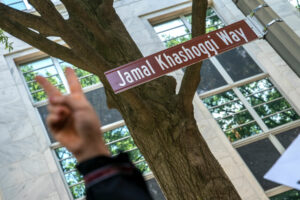








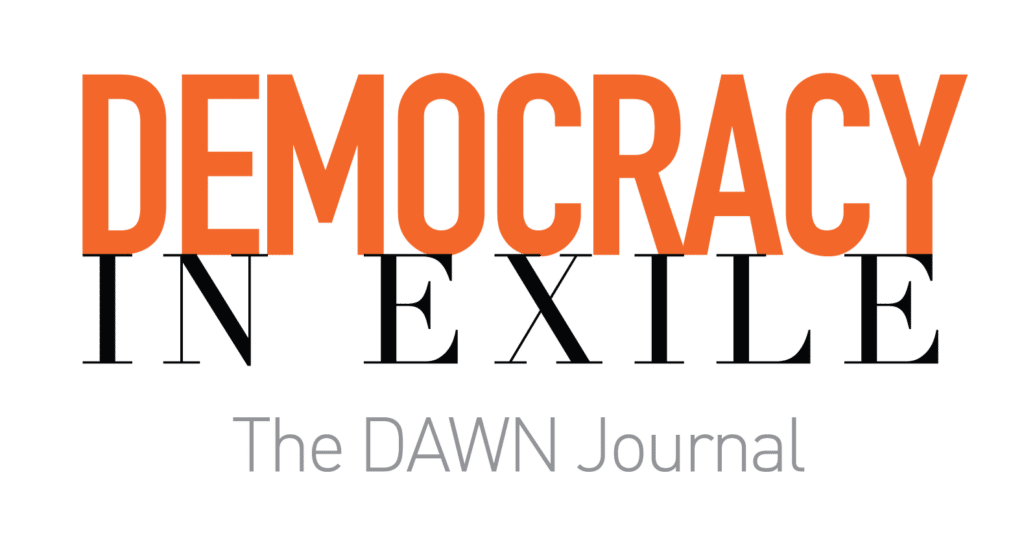




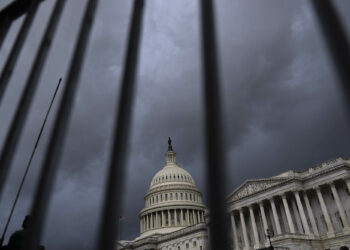




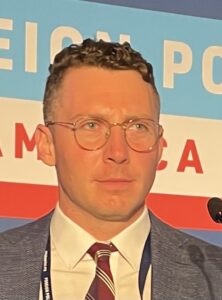
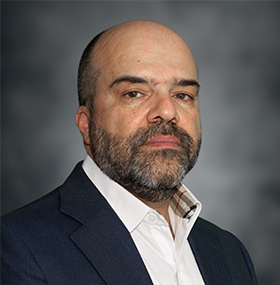
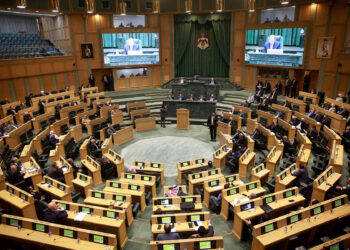



![Security forces loyal to the interim Syrian government stand guard at a checkpoint previously held by supporters of deposed president Bashar al-Assad, in the town of Hmeimim, in the coastal province of Latakia, on March 11, 2025. Syria's new authorities announced on March 10, the end of an operation against loyalists of deposed president Bashar al-Assad, after a war monitor reported more than 1,000 civilians killed in the worst violence since his overthrow. The Syrian Observatory for Human Rights said the overwhelming majority of the 1,068 civilians killed since March 6, were members of the Alawite minority who were executed by the security forces or allied groups. (Photo by OMAR HAJ KADOUR / AFP) / “The erroneous mention[s] appearing in the metadata of this photo by OMAR HAJ KADOUR has been modified in AFP systems in the following manner: [Hmeimim] instead of [Ayn Shiqaq]. Please immediately remove the erroneous mention[s] from all your online services and delete it (them) from your servers. If you have been authorized by AFP to distribute it (them) to third parties, please ensure that the same actions are carried out by them. Failure to promptly comply with these instructions will entail liability on your part for any continued or post notification usage. Therefore we thank you very much for all your attention and prompt action. We are sorry for the inconvenience this notification may cause and remain at your disposal for any further information you may require.”](https://dawnmena.org/wp-content/uploads/2025/04/syria-22039885951-360x180.jpg)
